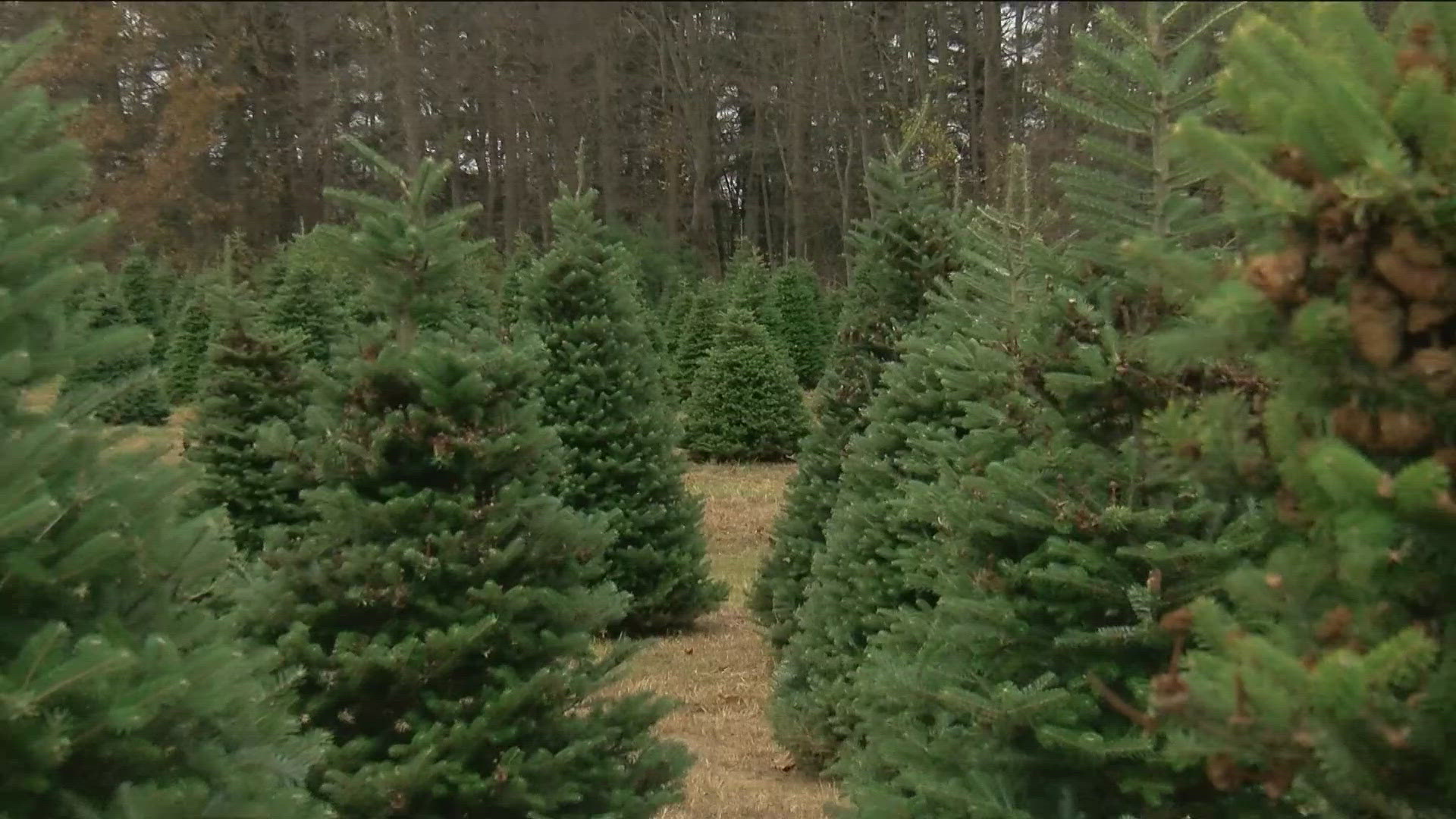WHITEHOUSE, Ohio — White pine or Fraser fir? How about Korean fir? When it comes to what kind of Christmas tree you want in your living room, families want to pick the perfect tree.
"It's a tradition in most homes having a tree in your house," Duke Wheeler, co-owner of Whitehouse Christmas Tree Farm said. "We try to encourage real trees because we spend a lot of time and love to get them perfect."
While the type of tree people want is on everyone's mind, they are probably wondering how much it will cost.
People will look back at this year's drought, where we started with a wet spring, which led to a dry summer.
While it affected some trees like seedlings in Whitehouse, Tim O'Connor from the National Christmas Tree Association said it's a reoccurring but small impact that won't affect costs.
"Oregon had a really hot, dry year two years ago where they shipped about 5% less trees," O'Connor said. "So while the stories were, 'All of Oregon is roasted and dry,' the reality is it only took 5% off of their volume."
So while the drought won't affect wholesale prices of trees themselves, businesses like Whitehouse Christmas Tree Farm will be dealing with higher costs of running the business.
"Labor is hard to find," Wheeler said. "Prices are up on labor this year as you know. I'm even working harder, you know what I mean? There's not enough labor around."
Not only are labor costs affecting prices but also prices in fertilizer and fuel and transportation for businesses that sell cut trees.
The National Christmas Tree Association projected paying 10-15% more for a natural tree back in 2023. But for small business owners, they want to reassure you that your money goes a long way in buying local.
"Choosing a real tree supports a family farm somewhere locally," O'Connor said. "Maybe not extremely locally, but somewhere in this country or in Canada, depending on where you buy your tree from. And it's such a fun experience for the family to go pick a real tree out."

